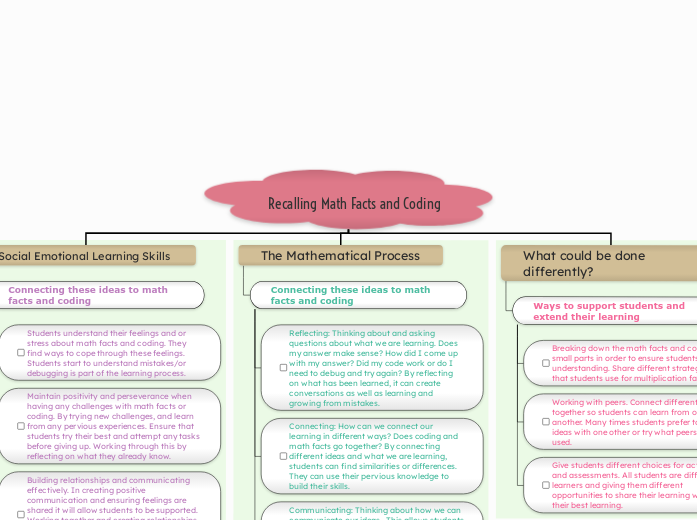Recalling Math Facts and Coding
Social Emotional Learning Skills
Connecting these ideas to math facts and coding
Students understand their feelings and or stress about math facts and coding. They find ways to cope through these feelings. Students start to understand mistakes/or debugging is part of the learning process.
Maintain positivity and perseverance when having any challenges with math facts or coding. By trying new challenges, and learn from any pervious experiences. Ensure that students try their best and attempt any tasks before giving up. Working through this by reflecting on what they already know.
Building relationships and communicating effectively. In creating positive communication and ensuring feelings are shared it will allow students to be supported. Working together and creating relationships, will allow for students to learn from one another and build relationships in getting over any fears about math.
The Mathematical Process
Connecting these ideas to math facts and coding
Reflecting: Thinking about and asking questions about what we are learning. Does my answer make sense? How did I come up with my answer? Did my code work or do I need to debug and try again? By reflecting on what has been learned, it can create conversations as well as learning and growing from mistakes.
Connecting: How can we connect our learning in different ways? Does coding and math facts go together? By connecting different ideas and what we are learning, students can find similarities or differences. They can use their pervious knowledge to build their skills.
Communicating: Thinking about how we can communicate our ideas. This allows students an opportunity to build their math vocabulary and how we share it to show our thinking. Communicating can be done with teachers, with peers, in small or large groups.
What could be done differently?
Ways to support students and extend their learning
Breaking down the math facts and coding to small parts in order to ensure students gain understanding. Share different strategies that students use for multiplication facts.
Working with peers. Connect different groups together so students can learn from one another. Many times students prefer to share ideas with one other or try what peers have used.
Give students different choices for activities and assessments. All students are different learners and giving them different opportunities to share their learning will show their best learning.
